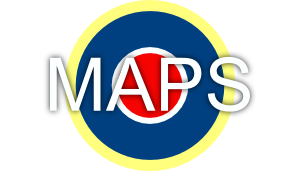Patrons:
Air Marshal Sir Ian Macfadyen
The Lieutenant Governor, His Excellency Lieutenant General Sir John Lorimer KCB DSO MBE
23rd April 1945
The aircraft chosen for the flight was B17G 43-38856 ‘GD-M’. It was to be flown by Captain Charles E. Ackerman, a veteran combat officer with over 455 hours experience on B17’s. He had completed a first tour of 25 combat missions and had only two more missions left to complete his second tour. Captain Ackerman was a very experienced pilot. He enlisted on 30th June, 1943, and was now only just 22 years of age. The aircraft was to be co-piloted by Flight Officer Edwin A Hutcheson. He had enlisted on 27th June, 1944, he was now 20 years old, with 61 hours experience on the B17. There were 31 people on board the aircraft that Spring morning.
At 8 am the aircraft lifted off from Ridgewell. Captain Ackerman positioned the aircraft on to a north westerly heading, for what he thought should be a fairly routine flight. His estimated time of arrival at their destination, Nutt’s Corner, was approximately 11 am. At 10.15 am the aircraft was approaching the north east coast of the Isle of Man.
Harold Ennett of The Crofts, Hibernia, was working that morning at Margher-e-Kew Farm where he was employed as a tractor driver. At 10.20 am he noticed a four engined, silver coloured aircraft flying in from the coast. He estimated its height at no more than 500ft; he could clearly see the star on its wing as it passed over. He stared at it in terror, as he realised it was flying straight towards the mist-covered slopes of North Barrule. He lost sight of it after a few seconds as it disappeared into the mist. Moments later Mr. Ennett heard a terrific explosion. He dropped back into his tractor seat and bowed his head; he knew exactly what had happened!
At approximately 10.25 am the B17 had struck the east side of North Barrule. It had exploded in a gigantic fireball and in an instant 31 young lives were lost.
One of the First RAF officers to arrive at the crash site was Flight Lieutenant Joseph Jackson, a medical officer from Andreas. The sight that met him was one of total devastation. The only recognisable part of the aircraft was a section of the tail; the rest of it was scattered over a fire blackened hillside.
As more RAF personnel arrived the grim task of recovering the bodies began. A vehicle was brought along the road from Hibernia and stopped below the crash site. The bodies were brought down on stretchers to the vehicle and conveyed to Andreas. It was here that the task of identification would begin.
The following day another 381st BG aircraft arrived at Andreas from Ridgewell. This aircraft, serial number 41-9043, was formerly named ‘Peggy D’ and was one of the first B17s to be based in England with the 97th Bomb Group. It had taken part in the USAAF’s first bombing raid over occupied Europe in 1943. After being replaced in active service by the newer B17Fs and later B17Gs this aircraft was disarmed and converted into a transport. It was stripped of its camouflage, polished and given the identification letters A-1. A new name, “Little Rock-ette”, was painted in large letters on its upper fuselage.The aircraft carried Colonel Hall, CO of the Bomb Group and Colonel Shackley with a team of personnel, including a dentist and flight surgeon, who were to help in the identification procedure. Hall and Shackley also went to the crash site to see what could be learnt of the cause of this accident.
Col. Hall was advised by Senior RAF officers that he would have to proceed through diplomatic channels with the Manx Government before being allowed to take the bodies of his men back to Ridgewell. He was told this could take a few days. Not wanting to prolong an already unpleasant task, Col. Hall took the decision that as soon as identification was complete he would leave for Ridgewell with the bodies.
On Wednesday, 25th April, the bodies were loaded onto “Little Rock-ette” by RAF personnel. As soon as this was completed and the aircraft made ready, Col. Hall and his party left Andreas for Ridgewell.
Col. Hall had by-passed virtually all diplomatic channels but as he told me in 1995, "My action resulted in some diplomatic flak, but since the bodies were back in England, nothing came of it".
The men who died on North Barrule were buried on 27th April, 1945 at the American Military Cemetery at Madingley near Cambridge. It was the largest funeral ever seen there; seventeen truckloads of men from Ridgewell attended.
The site of the crash is now a peaceful hillside with little left to tell of the events of 1945. This was, and still is, the worst aircraft accident in the Island’s history, with the loss of 31 lives.
On 15th June, 1995 as a direct consequence of a newspaper article on this accident by the author, moves were made to erect a permanent memorial at the crash site. The memorial plaque was funded by Maughold Parish Commissioners and the work carried out by Mark Cubbon, a local stone mason. Mike Corlett, a well known aviation archaeologist from Laxey and the author made the arrangements for the day, which was carried out in conjunction with the Manx Aviation Preservation Society.
The men of Flying Fortress B17G 43-38856 will not be forgotten on the Island; their place in Manx history is now assured.
Click on the link provided here to view an account of the accident on the memorial site for the 381st Bomb Group or on the other pages in this section to view photographs of the wreckage.
